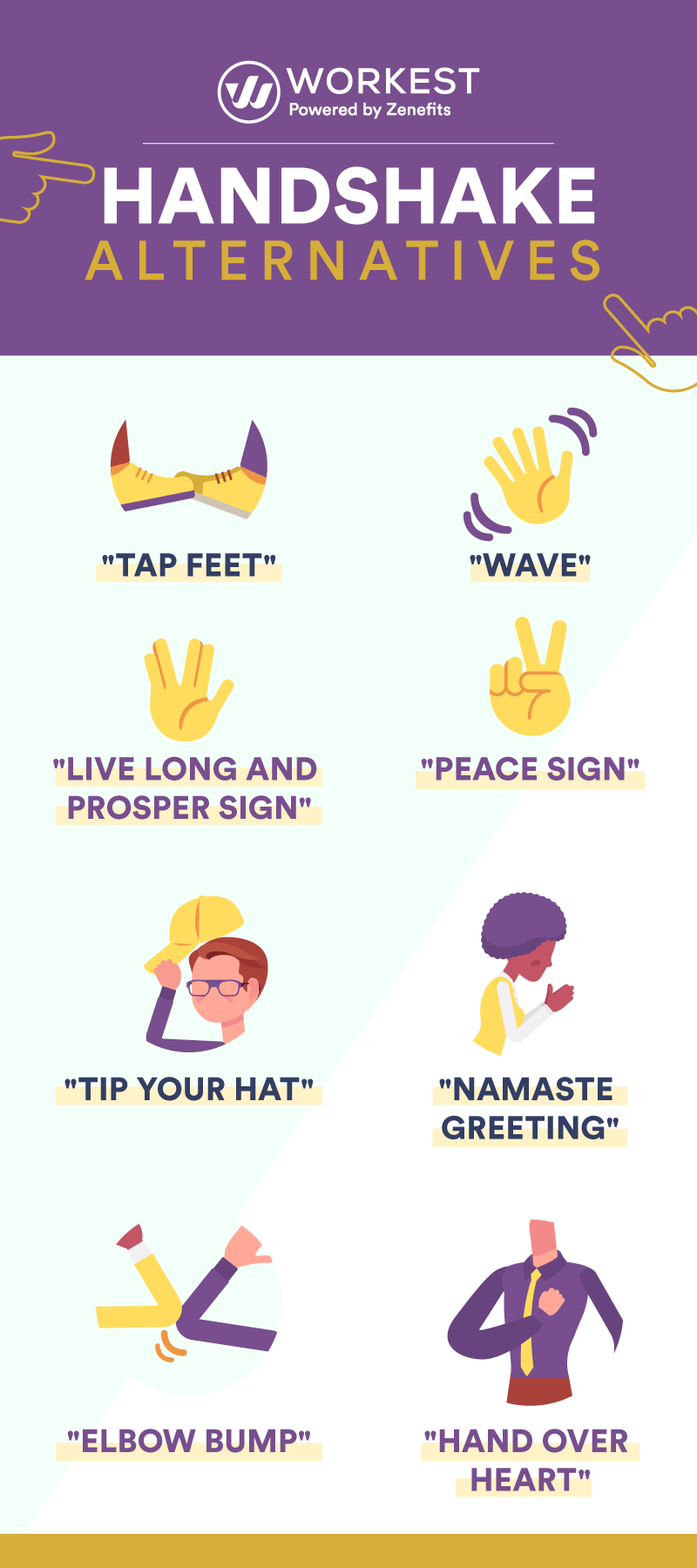Maintaining distance, cleaning surfaces, creating physical barriers, and other practices in the workplace can help mitigate risk and keep your staff safe
American businesses are beginning to consider returning to work. But many small business owners are concerned about employee safety if they do so. While commerce waits for no one, COVID-19 fears loom large. For business owners, the challenge will be to mitigate risk as much as possible, with practices and policies that put employee safety first.
There are common sense practices we’re applying to our personal lives that can easily translate to an office environment. Look for ways to use what we know about the virus, and its spread through contact and respiratory droplets, to help guide policies and practices that can help mitigate risk in the workplace.
Maintain distancing
While we’re all practicing distancing and trying to keep a 6-feet radius between ourselves and others when we purchase essential goods, the practice should be just as effective in the workplace. Some workplaces have the luxury of space, where business owners can modify workspaces to maintain distances of 6 feet. Although some moving may be required, along with the anticipated rewiring of workstations, the effort is worthwhile.
IF YOU CAN’T GET (OR CAN’T AFFORD TO GET) CUBICLES ORDERED, DELIVERED, AND INSTALLED ASAP, IT MAY TAKE SOME CREATIVITY TO CREATE SAFE DISTANCES.
For most others, small space and tightly knit groups are the norm. Many offices moved away from the “cubicle farm” layout to open concept workspaces. These areas may be particularly problematic to slow the spread of COVID-19. If you can’t get (or can’t afford to get) cubicles ordered, delivered, and installed ASAP, it may take some creativity to create safe distances.
If employees work at a group station with connected tables, move around as many as possible to create spaces between. If the office setup was a grouping of small tables together to form a large work area in the center of the room, move the small tables to the walls. Employees could still be facing the center, with their back to the wall, but with more space in between. Avoid close back-to-back or face-to-face configurations.
A good idea may be to make a rough sketch of the room and desk dimensions and draw out your options before you start moving furniture and rerouting wires. Room design templates are available on the internet to help.
Create barriers where possible
If you can’t move furniture to separate employees, barriers between desks may be a solution. Large pieces of cardboard or wood placed between gaps could create a cubicle-like separation. Remember when you were a kid and hung a sheet between yourself and your sibling to get some privacy in your room?
That skill set might come in handy to create a COVID-19 barrier between yourself and your colleagues. You’ll need a clothesline and clean sheets, but you could create a workplace fort that’s fun and protective.
Keep your workplace clean
Keeping surfaces clean will be critically important to mitigate risk. Hand and surface disinfecting wipes and cleaning products may be difficult to find, but there are DIY solutions you can make and use. The CDC has a list of alternate disinfecting products to make your own wipes and sprays.
Topping the list for germ-killing effectiveness is bleach. A mere 5 tablespoons of pure bleach per gallon of water is sufficient to create a disinfecting solution for surfaces and hands. Don’t use more than recommended since it can be hard on the skin. Dip a paper towel or napkin in and wipe down surfaces or hands carefully. Allow them to air dry for at least 1 minute.
Hydrogen peroxide is another germ killer. In fact, the EPA puts it on the top of their list of disinfectants, and it goes a long way. Only 3% hydrogen peroxide mixed with 97% water is enough to disinfect, but there’s a catch. Wipe down surfaces, but wait at least 6 to 8 minutes to let it do it’s germ-killing job.
Air it out
The CDC recommends opening windows or adjusting air conditioners to increase air circulation and flow. With spring finally arriving in most parts of the country, open the windows if your workspace allows. If not, keep fans running as much as possible. You can even encourage employees to keep small personal fans at their workspace, to keep the air moving, and hopefully the germs, away from themselves.
Wear a mask
WHILE EMPLOYEES ARE IN THEIR OFFICE OR CUBICLE, MASKS CAN BE OFF, BUT ASK THAT THEY WEAR THEM WHENEVER THEY VENTURE OUTSIDE THEIR WORKSPACE TO KEEP OTHERS SAFE.
Americans are being asked to wear masks in public places to keep the transmission of respiratory droplets from spreading. Office policies could mirror those recommendations. While employees are in their office or cubicle, masks can be off, but ask that they wear them whenever they venture outside their workspace to keep others safe.
Minimize contact
Encourage employees to email, text, or call — rather than meet face-to-face — with coworkers. Remember, don’t shake hands. “I don’t think we should ever shake hands again,” Dr. Anthony Fauci said. “Not only would it be good to prevent coronavirus disease, it probably would decrease instances of influenza dramatically in this country.”
The more we minimize contact, the more we minimize spread. Eating meals at desks, rather than lunch or break rooms, should be highly encouraged. Some companies are even closing down these common areas to keep employees from congregating. If that’s not possible, remove some tables and chairs and space them further apart for employees to eat/rest while keeping a safe distance.
Be stingy
The office refrigerator thief may finally be foiled! Ask employees to bring food, beverages, and that all-important coffee from home, rather than using the lunch room resources, if possible. That could even include silverware and napkins if you don’t have sanitary, single-serve receptacles for these products. But don’t stop there. Discourage sharing of equipment and supplies, especially headsets that have been near the face, as much as possible.
Restroom updates
COVID-19 has made toilet paper worth its weight in gold. The bread lines of the past have become the TP lines of today. While conservation is key, most alternates are not recommended. Napkins, tissues, and paper towels are not flushable and will wreak havoc on plumbing systems if used as a substitute. Post notes in restrooms to remind staffers these options may do more harm than good.
Employers may consider keeping a supply of inexpensive, sandwich-sized plastic sealable bags in ladies restroom areas to dispose of non-flushable personal hygiene products rather than using toilet paper. A note in the restroom could suggest this alternate use. Remind employees to use all restroom products sparingly to make sure there’s enough for everyone.
Hand washing
Employee hand washing has always been a priority, but in today’s environment it’s more critical than ever. The CDC has guidelines on how clean hands stop the spread of COVID-19. Employers should post these prominently in all restrooms:
Follow these 5 steps every time:
- Wet your hands with clean, running water (warm or cold), turn off the tap, and apply soap
- Lather your hands by rubbing them together with the soap. Lather the backs of your hands, between your fingers, and under your nails
- Scrub your hands for at least 20 seconds. Need a timer? Hum the “Happy Birthday” song from beginning to end twice
- Rinse your hands well under clean, running water
- Dry your hands using a clean towel or air dry them
About the author
Riia O’Donnell is a Human Resource professional with over 15 years of hands-on experience in every discipline of the field. A subject matter expert, she has written for the online HR market for over 8 years. Her first job, at age 15, was working the early morning shift at a local bakery on weekends.
https://www.zenefits.com/workest/making-your-office-safe-to-return-to-after-coronavirus/

